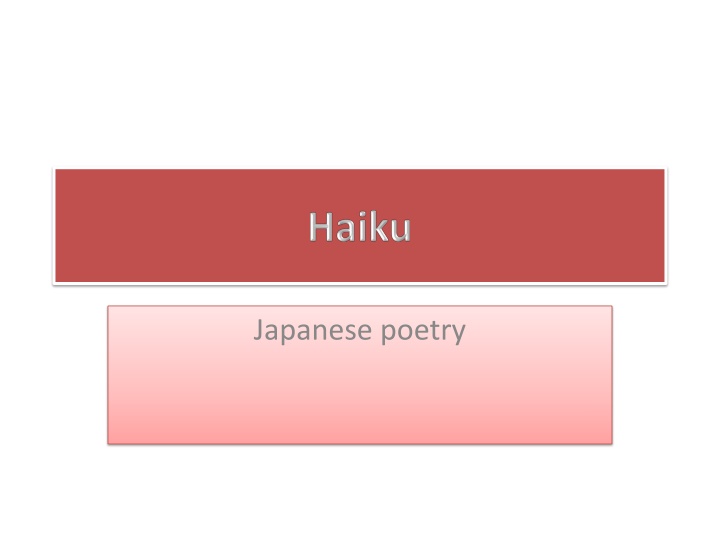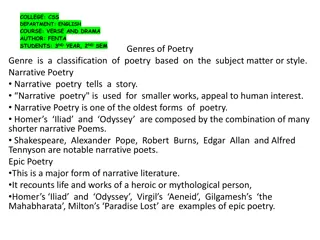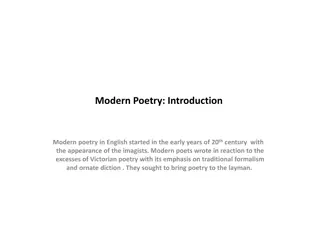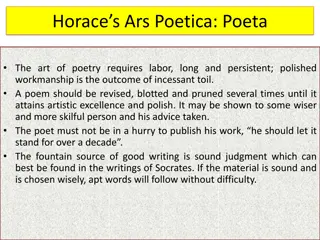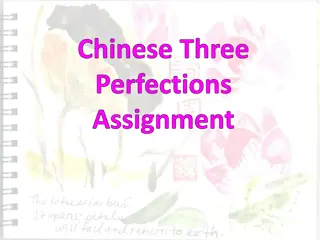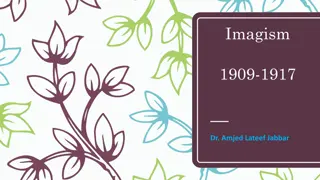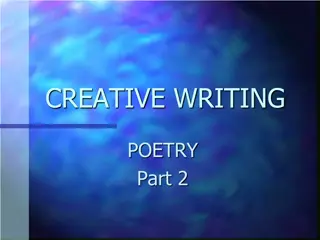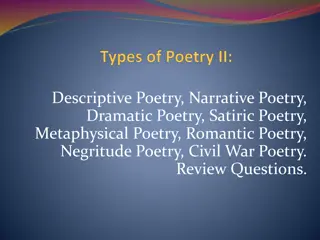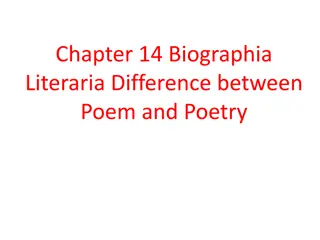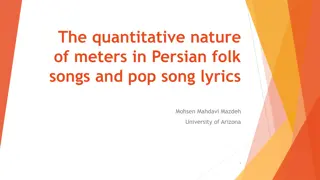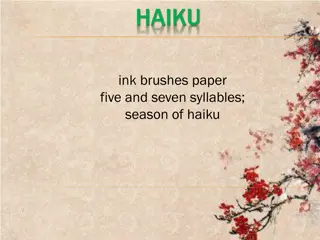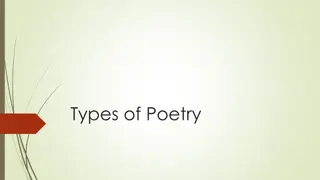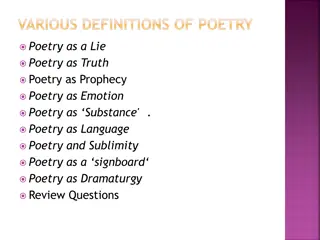Haiku Poetry: Origins and Practice
Discover the art of writing Haiku poetry by exploring its traditional structure and patterns. Learn how to craft your own Haiku using vivid imagery and concise language to capture the essence of nature and seasons.
Download Presentation

Please find below an Image/Link to download the presentation.
The content on the website is provided AS IS for your information and personal use only. It may not be sold, licensed, or shared on other websites without obtaining consent from the author.If you encounter any issues during the download, it is possible that the publisher has removed the file from their server.
You are allowed to download the files provided on this website for personal or commercial use, subject to the condition that they are used lawfully. All files are the property of their respective owners.
The content on the website is provided AS IS for your information and personal use only. It may not be sold, licensed, or shared on other websites without obtaining consent from the author.
E N D
Presentation Transcript
We are learning to understand to: understand origins and structure of a Haiku; to read together, listen to and talk about Haiku poems experiment with language , using rhythm and imagery to create our own Haiku.
How to Write a Haiku It is easy to learn to write a haiku, but it can take a lot of practice to learn how to do it well. This lesson will give you the basics for writing your own haiku. It s up to you to practice by writing a lot of them so you will get very good at it.
WHAT IS A HAIKU? A haiku is an unrhymed three-line poem. It is based on a traditional Japanese poetic form. Though there are different ways to traditional pattern in English is to write the first and last lines with five syllables each, and the middle line with seven syllables. write haiku, the
The pattern of syllables looks like this: Line 1: 5 syllables Line 2: 7 syllables Line 3: 5 syllables
Heres another way to visualize the same thing: 1 2 3 4 5 1 2 3 4 5 6 7 1 2 3 4 5
Subject Most often, haiku poems are about seasons or nature, though you can write your own haiku about anything you like.
Masaoka Shiki (1867-1902) In the coolness of the empty sixth- month sky... the cuckoo s cry. the tree cut, dawn breaks early at my little window
Matsuo Basho (1644-1694) Autumn moonlight a worm digs silently into the chestnut. Old pond a frog jumps the sound of water
Modern Haiku If you decide to write a haiku about nature, you will have many more subjects to choose from. You could write about animals, plants, the sky, the ocean, streams, the wind, and so on. Start by selecting a topic, and then decide what you want to say; what observation you want to make about it.
Ency Bearis Ocean is lovely With wonderful scenery Not with tsunami
Theme: Spring As the blue birds sing I am dreaming about spring I feel so happy
Summary Select a type of haiku. Decide if you are going to write a seasonal, nature, or other type of haiku. Pick a topic. Select one specific season, item in nature, or something else you are going to write about. Think about what is different about your last line. What observation do you want to make? Start writing. Don t forget to count the syllables as you read to make sure you ve got the right pattern. Finally, center your poem on the page like the poems in this lesson.
